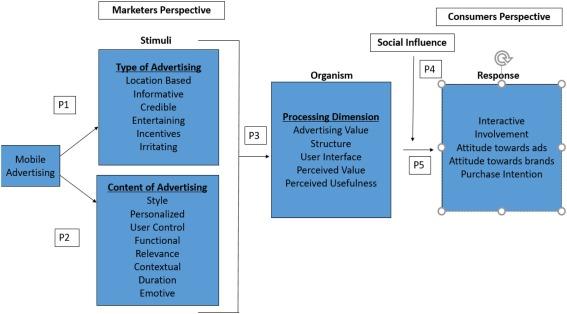Real-World Success: Case Studies of effective inclusion Strategies
In today’s globalized business environment,creating inclusive workplaces is more than a trend—it’s essential for organizational growth and innovation. Effective inclusion strategies foster diversity, empower individuals, and drive better business outcomes. This article dives deep into real-world success stories, providing actionable case studies, benefits of inclusion, and practical tips for implementing strategies that truly make a difference.
Why Inclusion Matters: The Benefits of Effective Strategies
- Enhanced Creativity and Innovation: Diverse teams bring varied perspectives, leading to more creative solutions.
- Better Financial Performance: Companies with effective diversity and inclusion strategies tend to outperform their competitors financially.
- Employee engagement and Retention: Inclusive environments make employees feel valued, increasing loyalty and reducing turnover.
- Improved Reputation: Organizations that prioritize inclusion attract top talent and strengthen their brand image.
- Expanded Market Reach: Understanding a wider range of customer needs helps capture new markets and drive growth.
case studies: Real-World Successes in Inclusion Strategies
Case Study #1: Microsoft—Empowering People with Disabilities
Microsoft’s inclusive hiring initiatives stand as a benchmark for effective inclusion strategies. Recognizing the unique talents people with disabilities bring, Microsoft implemented the Autism hiring Program, focusing on candidates’ abilities rather than conventional interviewing.
- Strategy: Adjusted recruitment processes, trained hiring managers, and created accessible workspaces.
- Outcome: Increased team innovation and boosted morale by embracing neurodiversity.
- Success Factor: leadership commitment and ongoing feedback mechanisms ensured long-term success.
Case Study #2: Sodexo—Embracing Gender Balance
Global services giant Sodexo introduced a complete program to achieve gender parity in leadership roles. Their Gender Balance Study found that teams with a balanced gender split performed better.
- Strategy: Launched mentorship programs, set KPIs for gender balance, and provided unconscious bias training.
- Outcome: Higher employee satisfaction (about 10% increase) and improved financial results.
- Success Factor: CEO buy-in and transparent progress tracking were key to driving meaningful change.
Case Study #3: Accenture—Championing LGBTQ+ Inclusion
Accenture has consistently ranked among the top companies for LGBTQ+ workplace equality. With non-discrimination policies,employee resource groups,and targeted benefits,the company fosters a safe and welcoming culture.
- Strategy: Launched global Pride networks, provided transgender-inclusive health benefits, and embedded inclusive policies in recruitment.
- Outcome: 96% of LGBTQ+ employees report feeling comfortable being themselves at work.
- Success Factor: Ongoing education, visible allies at leadership levels, and public commitment to inclusion.
Case Study #4: EY—Inclusive Leadership and Cultural Awareness
EY (Ernst & Young) understands that building inclusive leadership capabilities is central to company-wide inclusion. Through comprehensive diversity and inclusion training, they’ve developed a culture where diverse perspectives thrive.
- Strategy: Rolled out global workshops on cultural awareness, launched inclusive leadership toolkits, and measured progress through regular surveys.
- Outcome: Improved leadership diversity and higher client satisfaction scores.
- Success Factor: Taking a data-driven approach to monitor and adapt strategies as needed.
Practical Tips: Implementing Effective Inclusion Strategies
Building a truly inclusive workplace requires dedication,planning,and continuous improvement. Here are some actionable tips inspired by real-world case studies:
- Leadership Commitment: Senior leaders must model inclusive behaviors and actively sponsor initiatives.
- Employee Resource Groups (ERGs): Foster safe spaces for underrepresented groups to share experiences and drive change.
- Data-Driven Decisions: Use regular employee surveys and diversity metrics to assess progress and uncover new opportunities.
- Continuous Training: Offer workshops on unconscious bias, accessibility, and inclusive leadership.
- Transparent Communication: share inclusion goals, results, and stories across the organization to increase engagement.
- Accessible Environments: Ensure physical and digital spaces accommodate all employees’ needs.
- Mentorship and Sponsorship: Pair high-potential employees from diverse backgrounds with mentors and sponsors.
First-Hand Experiences: Insights from Inclusion Champions
“when our company launched a neurodiversity hiring initiative, it wasn’t just about opening doors—it transformed our team’s perspective and energy.We learned that small adjustments can unlock huge potential.”
– HR Manager, Tech Startup
“Employee resource groups gave me a voice and community at work. Sharing our stories helped leadership improve policies in ways I never expected.”
– Employee, Fortune 500 Company
These experiences highlight that authentic, effective inclusion strategies not only benefit individuals—they can ignite positive change across entire organizations.
Conclusion: Building a Future with Effective Inclusion
Inclusion isn’t a checkbox—it’s a journey that demands effort, empathy, and adaptability. As the case studies above demonstrate, organizations that prioritize effective inclusion strategies see lasting benefits: better employee experiences, enhanced innovation, and greater business success. By learning from real-world successes, setting clear goals, and engaging every level of the organization, you can pave the way for a truly inclusive workplace—one where everyone thrives.
To stay competitive and resilient in an ever-changing world, make inclusion a cornerstone of your business strategy. Start small, measure progress, and let the stories of inclusion champions inspire your journey toward a brighter, more equitable future.

